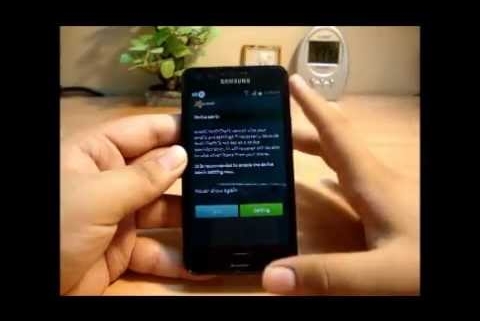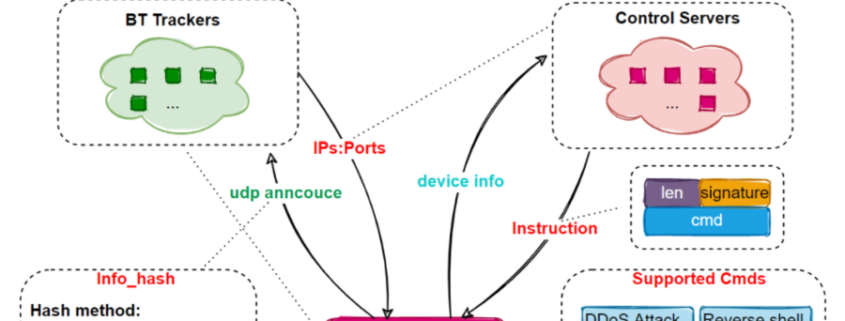Tag Archive for: AT&T
AT&T Looks to Shut Down Botnet that Attacked 5,700 Network Appliances
/in Internet Security
AT&T is working to stop a botnet that has infected at least 5,700 network edge servers inside its networks and appears designed to steal sensitive information and launch distributed denial-of-service (DDoS) attacks.
Researchers at Netlab, the network security unit of Chinese tech giant Qihoo 360, wrote in a report this week that the rapidly updated botnet was attacking voice-over-IP (VoIP) servers from Edgewater Networks that are housed within AT&T’s network and are designed to route traffic from enterprise customers to upstream mobile providers (in this case, AT&T).
The botnet was able to exploit an older vulnerability in unpatched EdgeMarc Enterprise Session Border Controllers (ESBCs) that is tracked as CVE-2017-6079. Once inside the appliances, the botnet installed a modular malware strain that the Netlab researchers dubbed EwDoor.
The researchers initially detected the botnet on Oct. 27, observing it attacking the ESBCs through the four-year-old vulnerability. They wrote that the botnet uses a “relatively unique” mount file system command in its payload.
A Short Window of Visibility
The initial version of EwDoor used a multiple command-and-control (C&C or C2) redundancy mechanism, but after having problems with the main C&C network, the botnet operators reconfigured the communication model and the researchers lost track of the botnet. However, during the short time they had sight of it, they confirmed that the targets were the Edgewater devices within the AT&T network and that all 5,700 appliances were located in the United States.
“So far, the EwDoor in our view has undergone 3 versions of updates, and its main functions can be summarized into 2 main categories of DDoS attacks and Backdoor,” they wrote. “Based on the attacked devices are telephone communication related, we presume that its main purpose is DDoS attacks, and gathering of sensitive information, such as call logs.”
The three updates occurred during November.
Also read: Top Vulnerability Management Tools for 2021
Exploiting the Edgewater Devices
According to the Netlab researchers, the botnet exploits a hidden page in the Edgewater appliances that includes user-defined commands. The bad actors can…
EwDoor Malware Infects AT&T Users: How to Detect Data-Stealing Virus, Remove from Your Phone
/in Computer Security
EWDoor malware infected the networking equipment of AT&T, which protects and manages communications of the mobile carrier.
The said AT&T malware affected more than 5,700 subscibers.
EWDoor Malware Affects AT&T Subscribers
Chinese cybersecurity company, Qihoo 360, found out that thousands of networking equipment belonging to AT&T subscribers in the United States have been compromised with newly acquired malware, per Ars Technica.
Gizmodo reported that the AT&T malware acts as a backdoor, allowing an attacker to get into networks, steal data and engage in other activities.
Moreover, the said attacked device is named EdgeMarc Enterprise Session Border Controller. This tool is used by small and medium companies to protect and manage phone calls, video conferencing and other real-time communications.
In addition to this, session border controllers, the link connecting businesses and their Internet service providers, have access to a wide range of bandwidth and may obtain sensitive personal information, making it perfect for distributed denial of service (DDoS) attacks and data gathering.
Since the AT&T malware acts as a backdoor, it was named EWDoor by Qihoo 360, which is a word play of the “backdoor,” referring to the fact that it affects Edgewater devices.
In addition to this, EWDoor malware can update on its own, do port scanning, organize files, DDoS attack, reverse shell, and unprecedented command execution.
For those who do not know what DDoS is, Kaspersky stated that it is a method of attack that takes advantage of internet resource capacity limitations.
The DDoS attack will make several demands towards the targeted online resource. Aside from this, it also aims to surpass the website’s capabilities, accommodate numerous request and prevent it from working properly.
Read Also: Apple Hack for Students, Teachers: How to Get $400 Discount on Your Mac, iPad Purchase
On the other hand, Qihoo 360 researchers identified the EWDoor malware after infiltrating a previously undisclosed botnet, revealing that it had affected at least 5,700 AT&T subscribers in the United States.
They also claimed to have discovered more than 100,000 devices using the same TLS certificate as…



